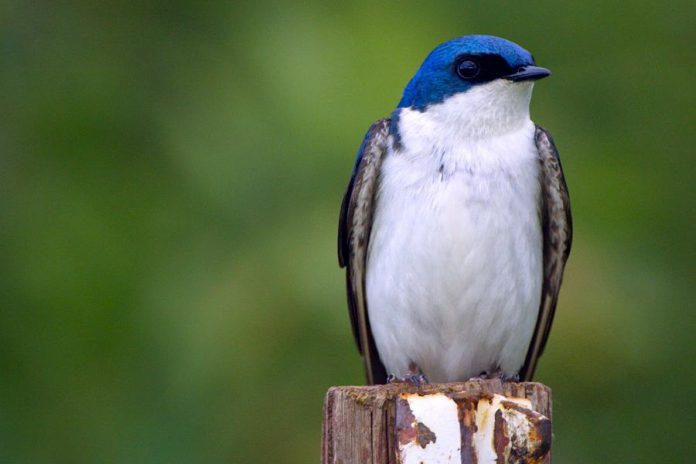
It’s a sure sign of spring when the chorus of songbirds once again returns to our region. Recent mornings, I’ve awoken to the sounds of robins chirping, the tune of a white-throated sparrow, and the gentle cooing of morning doves. The silence of the winter has broken.
Imagine for a moment if that winter silence continued into spring and summer. Unfortunately, it’s a scenario that could very well unfold as we’ve seen sharp declines in the number of songbirds over the past few decades.
Birdsong that has graced the Earth for millions of years, and for all of human history, could soon be stilled in a human-made perfect-storm of negligence and unintended consequences.
A film that was shown on CBC Television last week, Song Bird SOS, shines light on the ever-growing decline of songbirds, and outlines some of the potential causes. You can view the documentary at cbc.ca.
Directed by Su Rynard, the film is the artfully shot story of the mass depletion of songbirds in the Americas, an alarming thinning of populations that has seen declines of many species since the 1960s. According to international birding expert Dr. Bridget Stutchbury, who is featured in the documentary, we may have lost almost half the songbirds that filled the skies 50 years ago.
What are some of the causes that are hurting songbird populations? They’re wide ranging, but the common denominator is human interference in their way of life. From cats being allowed to roam free, to large glass-walled skyscrapers, human activity is to blame for much of the decline of these beautiful birds.
Up to billion birds fall victim to high-rise buildings alone. Birds fly into the reflective windows and are killed or seriously injured. In Toronto, an organization called Fatal Light Awareness Program (FLAP) works with a host of volunteers to collect the dead and rescue the injured birds, as well as advocating for windows that are bird friendly.
Song Bird SOS Trailer
Neonicotinoids were in the news a lot in 2014 for their harmful effects to bees and other pollinators. It turns out that these chemicals may also be impacting songbird populations.
The seed that many farmers in the prairies sow is treated with neonicotinoids to deter insects from damaging the mature crops. In Saskatchewan the film follows avian eco-toxicologist Christy Morrissey, who discovers lethal neonicotinoids in the spring wetland water supply ahead of its annual application by local farmers.
The neonicotinoids are potentially killing off many of the insects that songbirds rely on as a food source. What’s especially scary is these chemicals are carrying over from the year prior.
Cats are also major non-natural predators to songbirds. Humans have introduced millions of cats into the environment that wouldn’t naturally be there. Cats are born hunters and unfortunately songbirds are easy targets. Potentially billions of birds fall victim to cats each year.
Light pollution is also a major concern for songbirds. A fact that many of us are unaware of is that songbirds migrate at night. Distracted by light, the birds are can potentially become trapped or thrown off course.
A recent example comes out of Saint John in New Brunswick, when nearly ten thousand migrating songbirds — including some rare species — were killed as they were attracted to and flew into a gas flare at a Canaport LNG facility in the city.
What can you do to help our songbirds? There are several small things that can have a big impact.
- Make your backyard bird friendly. Plant native trees and shrubs, especially types that produce fruit.
- Reduce window collisions around your home. Make your windows less reflective by adding black plastic silhouettes of a falcon, hawk, or owl. These work not because they look like predators but because they disrupt the window’s reflectivity. Relocate feeders to areas further away from windows.
- Provide homes for songbirds. Place birdhouses around your property so that songbirds will take advantage of them. You can buy a birdhouse for around $20 at the GreenUP Store.
- Keep cats indoors. Cats kill millions (by some estimates billions) of birds annually. Keep your cat indoors and away from birds to prevent further deaths.
- Support causes that help songbirds. Bird Studies Canada is a great example of a national charity organization based here in Ontario that focuses on research and conservation of birds. Learn more at bsc-eco.org.
- Purchase shade-grown coffee. Traditionally, coffee is grown in full sun in South America, meaning millions of hectares of rainforest is cleared for its production. Shade-grown coffee is grown beneath the forest canopy, preserving vital bird habitat.
If we want future generations to be serenaded by beautiful songbirds we must take action now to reverse their decline. If we fail to do so, the years ahead will grow quieter and quieter before eventually their songs are silenced forever.


























